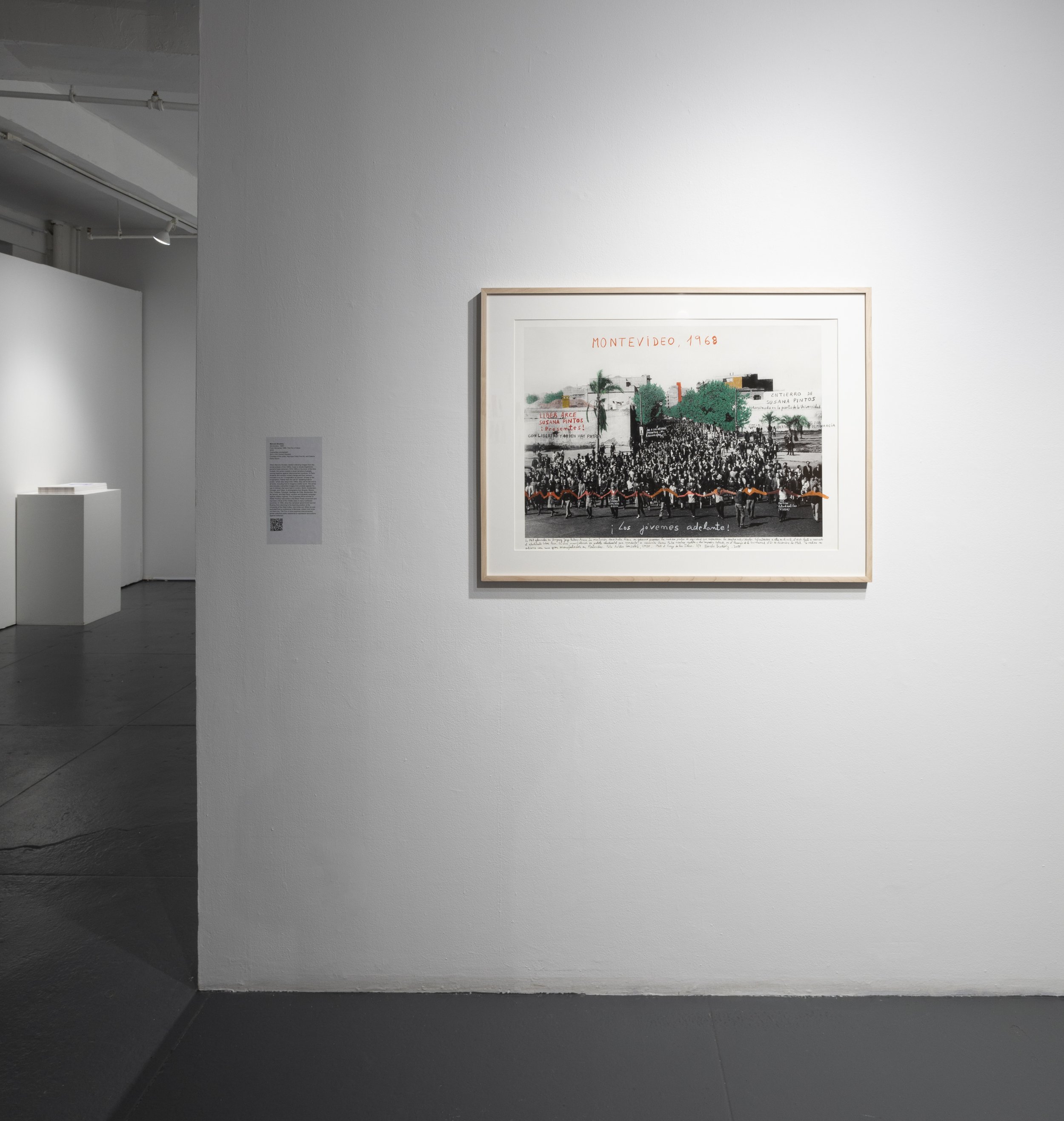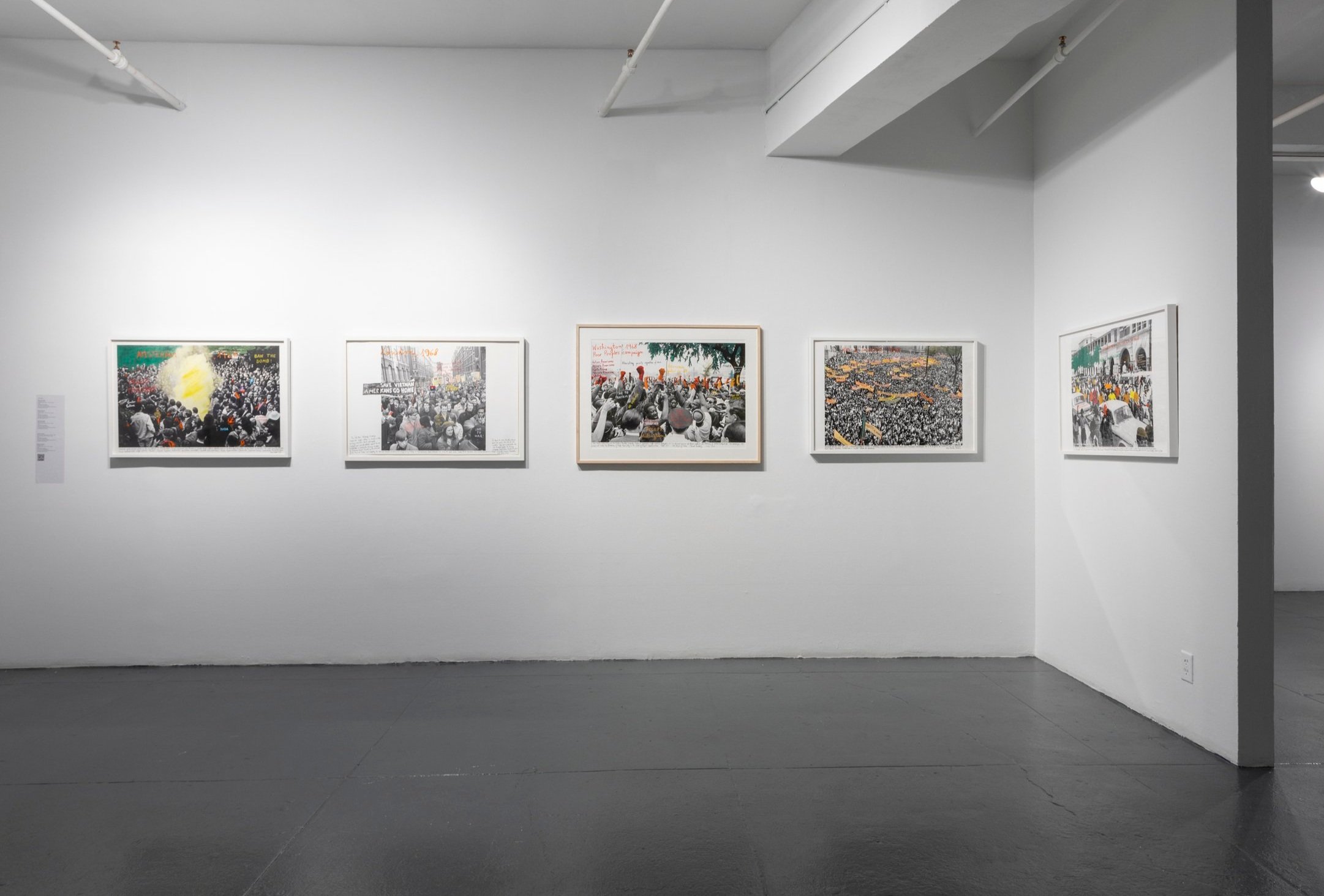Marcelo Brodsky
Marcelo Brodsky, Montevideo, 1968 from the series 1968, The Fire of Ideas, 2016, Overwritten photograph 29.5 x 39.5 inches (framed). Courtesy of the artist, Henrique Faria Fine Art, and Galeria Karla Osorio.
Marcelo Brodsky, Amsterdam, 1967 From the series 1968, The Fire of Ideas, 2016, Overwritten photograph, 24.5 x 36.5 inches (framed). Courtesy of the artist, Henrique Faria Fine Art, and Galeria Karla Osorio.
Marcelo Brodsky, London, 1968 From the series 1968, The Fire of Ideas, 2015, Overwritten photograph, 26 x 38.5 inches (framed). Courtesy of the artist, Henrique Faria Fine Art, and Galeria Karla Osorio.
Marcelo Brodsky, Washington, 1968 From the series 1968, The Fire of Ideas, 2015, Overwritten photograph, 29.5 x 39.5 inches (framed). Courtesy of the artist, Henrique Faria Fine Art, and Galeria Karla Osorio.
Marcelo Brodsky, Rio de Janeiro Passeara Dos Cem Mil I, 1968 From the series 1968, The Fire of Ideas, 2015, Overwritten photograph, 24.5 x 36.5 inches (framed). Courtesy of the artist, Henrique Faria Fine Art, and Galeria Karla Osorio.
Marcelo Brodsky, Kingston, 1968 From the series 1968, The Fire of Ideas, 2016, Overwritten photograph, 24.5 x 36.5 inches (framed). Courtesy of the artist, Henrique Faria Fine Art, and Galeria Karla Osorio.
Visual description: Black and white reproduced press photographs of protests—crowds marching and assembling—in some, individuals and their facial expressions are visible captured frowning, laughing, talking, and chanting, in others, the crowd is further away in a black and white blur. The artist has marked each reproduction with colored pencils and markers in yellow, orange, red, and green hues each stating the city and the year of the protest pictured overwritten with descriptors and slogans like: “No to War,” “Counter Culture,” and “Peace in Vietnam.” At the bottom of each image in pencil are more details of the precise location, street, park, or square, of the protest and who was there, an example is “beatniks, hippies, dadaists, and provokers.”
Wall Text: When Marcelo Brodsky started collecting images from the social protests of the 1960s, it was to situate Argentina’s period of state terrorism (1974-1983) in the tenor of the time. Instead, the series created a visual narrative of people coming together against interconnected injustices. In Paris, students and workers incited change and their banners included a cry for “L’imagination au pouvoir” (Power to the Imagination). Rather than the call for “speaking truth to power,” which also rang in the 1960s, they call for the end to all limits, including how to imagine a better world. The series also includes overwritten images from protests against the war in Vietnam that were held in London, Berlin, Amsterdam, Chicago, and Tokyo. In photographs from Bogotá, Mexico City, Cordoba, Tucumán, Santiago de Chile, Montevideo, Rio de Janeiro, and Sao Paulo, workers and students campaign against military regimes. The Guyanese Africa-scholar Dr. Walter Rodney was active in the Black Power movement and had been critical of the middle class in many Caribbean countries. In 1968, when the Jamaican government banned Rodney from returning to his teaching position at the University of the West Indies, riots broke out. When he was excluded from a conference in Montreal, violent riots broke out there too. The Fire of Ideas explores interconnected global collective public resistance to oppression and actions against militarism.
About
During his exile in Barcelona in the 1980s, Marcelo Brodsky (Argentina, 1954), an economics graduate from the University of Barcelona, was trained as a photographer at the International Center of Photography, Barcelona, by the Catalonian photographer Manel Esclusa. In 1997 Brodsky edited and exhibited for the first time the photographic essay Buena Memoria (Good Memory) based on the effects of state terrorism in Argentina. Between 1997 and 2007, the exhibition was presented more than 120 times in 26 countries, both as a one-man show and as part of other artistic projects. Building on the momentum of Buena Memoria, Brodsky has continued creating and exhibiting work based on the ideas of collective memory, oblivion and human rights abuses around the world. Throughout his career he has created visual correspondences through collaborations with other artists based several projects on archival images which he intervened with inscriptions as a form of personal narrative. Some of these projects include I Pray with My Feet (2014) and 1968, The Fire of Ideas (2014-15). His work is featured in public collections worldwide including, the Museum of Fine Arts, Houston; the Princeton University Art Museum; the Tate Collection, UK; ESCALA, University of Essex; the Sprengel Museum, Hannover; the Pinacoteca do Estado, Sao Paulo; the Museo de Arte Moderna, Recife; Museo Nacional de Bellas Artes, Buenos Aires; Museo de Arte Moderno MAMBA, Buenos Aires; Museo de Arte de Lima; Coleccion Celarg, Venezuela; Museo de la Memoria y los Derechos Humanos, Santiago de Chile; and the Museo de la Solidaridad Salvador Allende, Santiago de Chile.
Brodsky is a member of the Buena Memoria Human Rights organization and the Board of the Park of Memory for the Victims of State Terrorism close to the Río de la Plata and the Monument for the Missing and Murdered during the military dictatorship. Brodsky’s work seeks to communicate to the new generations the experience of state terrorism in Argentina in a different way, based on emotion and sensorial experience such that the transmission of it will generate a real and profound knowledge based on dialogue among the different generations affected by the consequences of the military dictatorship.


